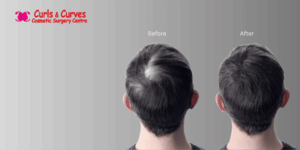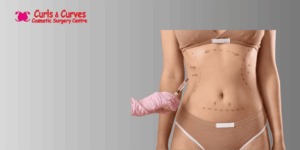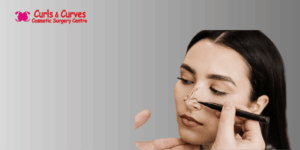It might be hard to believe, but for many people with a deviated septum, breathing can be a daily challenge. The septum, the wall of cartilage and bone that splits the nasal cavity into two nostrils, plays a vital role in proper airflow. When this wall is crooked or off-centre, it’s referred to as a deviated septum, which can lead to a range of health issues. In severe cases, a septoplasty surgical procedure may be necessary to correct the defect and restore normal breathing. Read on to learn what a deviated septum is, the signs that indicate surgery might be needed, how the septoplasty surgical procedure can help, and lifestyle tips for managing the condition.
What is a Deviated Septum?
A deviated septum arises when the nasal septum, which should be centred, is shifted to one side. This misalignment can happen due to congenital factors, trauma, or changes that happen over time. Studies have shown that around 70% of the population worldwide has some degree of septal deviation, though many do not experience noticeable symptoms. However, for those diagnosed with a more significant deviation, chronic deviated septum symptoms can interfere with breathing, sleeping, and overall well-being, often requiring medical intervention.
Common Symptoms of a Deviated Septum
Not all deviated septum cases cause noticeable issues, but for those who experience symptoms, they can severely impact daily life. Here are some key deviated septum symptoms that may indicate the need for treatment:
- Difficulty Breathing Through One or Both Nostrils: A misaligned septum can obstruct one side of the nose, making it hard to breathe, especially during physical activity or when dealing with a cold or allergies.
- Frequent Sinus Infections: A deviated septum can hinder airflow and lead to mucus buildup, increasing the likelihood of sinus infections. Chronic sinusitis is often a sign that a septoplasty surgical procedure may be required.
- Nasal Congestion: A blocked or congested nose, particularly one that feels worse on one side, is another common deviated septum symptom. The severity can fluctuate based on your position, time of day, or environment.
- Nosebleeds: A deviated septum can cause the nasal passages to dry out, leading to frequent nosebleeds. If you’ve ruled out environmental factors like dry air, the deviated septum may be the culprit.
- Loud Snoring or Sleep Apnea: Breathing difficulties related to a deviated septum can result in snoring or obstructive sleep apnea (OSA), a serious condition where breathing repeatedly stops and starts during sleep.
- Facial Pain or Pressure: Pressure from a deviated septum can cause discomfort around the nasal area, contributing to facial pain and even sinus headaches.
When Should You Consider Septoplasty?
Septoplasty is a surgical technique that corrects the alignment of the septum, restoring proper airflow and alleviating deviated septum symptoms. If you experience the following, it might be time to consider a septoplasty surgical procedure:
- Chronic Breathing Issues: If nasal sprays, decongestants, or antihistamines haven’t improved your breathing, surgery may be the only option to correct the deviated septum and enlarge airflow capacity.
- Recurrent Sinus Infections: Frequent infections that don’t respond to antibiotics may be linked to a deviated septum. Straightening the septum can improve sinus drainage and reduce the frequency of infections.
- Persistent Nasal Blockage: If your nasal blockage is chronic, particularly on one side, and treatments have failed, septoplasty can resolve the issue by restoring airflow through both nostrils.
- Sleep Issues Due to Snoring or Sleep Apnea: Snoring or sleep apnea can be linked to deviated septum symptoms. A septoplasty surgical procedure can help improve airflow during sleep, reduce snoring and potentially alleviate mild to moderate sleep apnea.
What Happens During Septoplasty?
A septoplasty surgical procedure is typically done as an outpatient treatment, meaning patient can go home the same day. The surgery duration can be 60 to 90 minutes, depending on the complexity of the case.
What to Expect During the Procedure:
- Anaesthesia: The procedure is done under general anaesthesia to ensure comfort.
- Recovery: Side effects like swelling, bruising, and mild discomfort are common post-surgery. Full recovery may take several weeks, though most people return to normal activities within a few days.
Lifestyle Tips for Living with a Deviated Septum
For those who aren’t ready for surgery or want to manage their deviated septum symptoms, certain lifestyle changes can help:
- Use a Humidifier: Dry air can worsen symptoms like nasal congestion and nosebleeds. Keeping a humidifier in your home, especially in the bedroom, can keep your nasal passages moist and ease breathing.
- Stay Hydrated: Drinking a sufficient amount of water helps thin mucus, making it easier to be released from your sinuses. This can reduce congestion and sinus pressure caused by a deviated septum.
- Sleep with Your Head Elevated: Sleeping with your head propped up can improve nasal airflow, especially if you experience congestion. This can also help reduce snoring associated with deviated septum symptoms.
- Practice Nasal Irrigation: Using a saline solution or neti pot to rinse your nasal passages is helpful in clearing mucus buildup, reducing congestion, and easing breathing difficulties.
- Avoid Irritants: Smoke, dust, and strong odours can further irritate your nasal passages and worsen deviated septum symptoms. Try to avoid exposure to these irritants whenever possible.
Final Words
Living with a deviated septum can be very difficult, but understanding your condition and treatment options can dramatically enhance your quality of life. If you’re experiencing chronic symptoms that interfere with your daily activities, a septoplasty surgical procedure may be the solution. However, for those looking to manage symptoms without surgery, incorporating simple lifestyle adjustments can help you breathe more easily and feel more comfortable.
Want to Get Free From Deviated Septum: Experience Expert Treatment at Curls & Curves
If you’re struggling with breathing issues, recurrent sinus infections, or sleep problems due to a deviated septum, it may be time to consider septoplasty. At Curls & Curves, our experienced team specialises in diagnosing and treating nasal conditions, including the septoplasty surgical procedure. Contact us today and take the first step towards easier breathing and better health.





